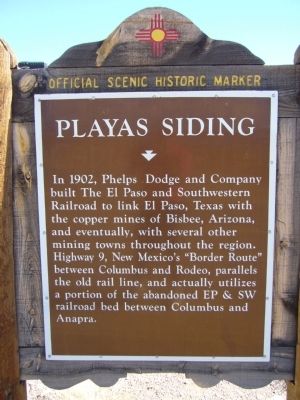Welcome to Playas Siding, a historical gem in the vast landscape of New Mexico. Situated in the Playas Valley, Playas Siding has seen a fascinating evolution from a bustling railway station to a hub of modern training and research. Let’s journey through its unique history.
In the late 19th century, the Playas Valley was a strategic choice for the El Paso and Southwestern Railroad, completed in 1902 by Phelps, Dodge and Company. This railway connected El Paso, Texas, to the copper mines of Bisbee, Arizona, and other mining towns. The valley’s abundant water supply was a key factor in its selection, making Playas Siding an essential stop along the line. It became a major station for loading cattle, supporting the burgeoning cattle business in the region.
Fast forward to 1971, Phelps Dodge built a copper smelter ten miles south of Playas Siding. To support this operation, the company constructed a town for its employees, complete with 250 rental homes, a bowling alley, a community center, and more. This self-sustained community thrived, hosting around 1,000 residents, and became a commerce center for local ranchers and citizens.
The smelter’s towering 200-foot stack, known as ‘La Estrella del Norte,’ guided many migrants from Mexico, providing a literal beacon of light in the night. However, by 1999, falling copper prices led to the smelter’s closure, marking the end of an era for the town.
In 2004, New Mexico Tech purchased the town and transformed it into the Playas Training and Research Center. Today, it serves as a premier training venue for first responders, military personnel, and law enforcement, playing a crucial role in counter-terrorism and security training.
Playas Siding’s story is one of transformation and adaptation, reflecting broader themes of industrial growth and decline, and the enduring spirit of innovation.




